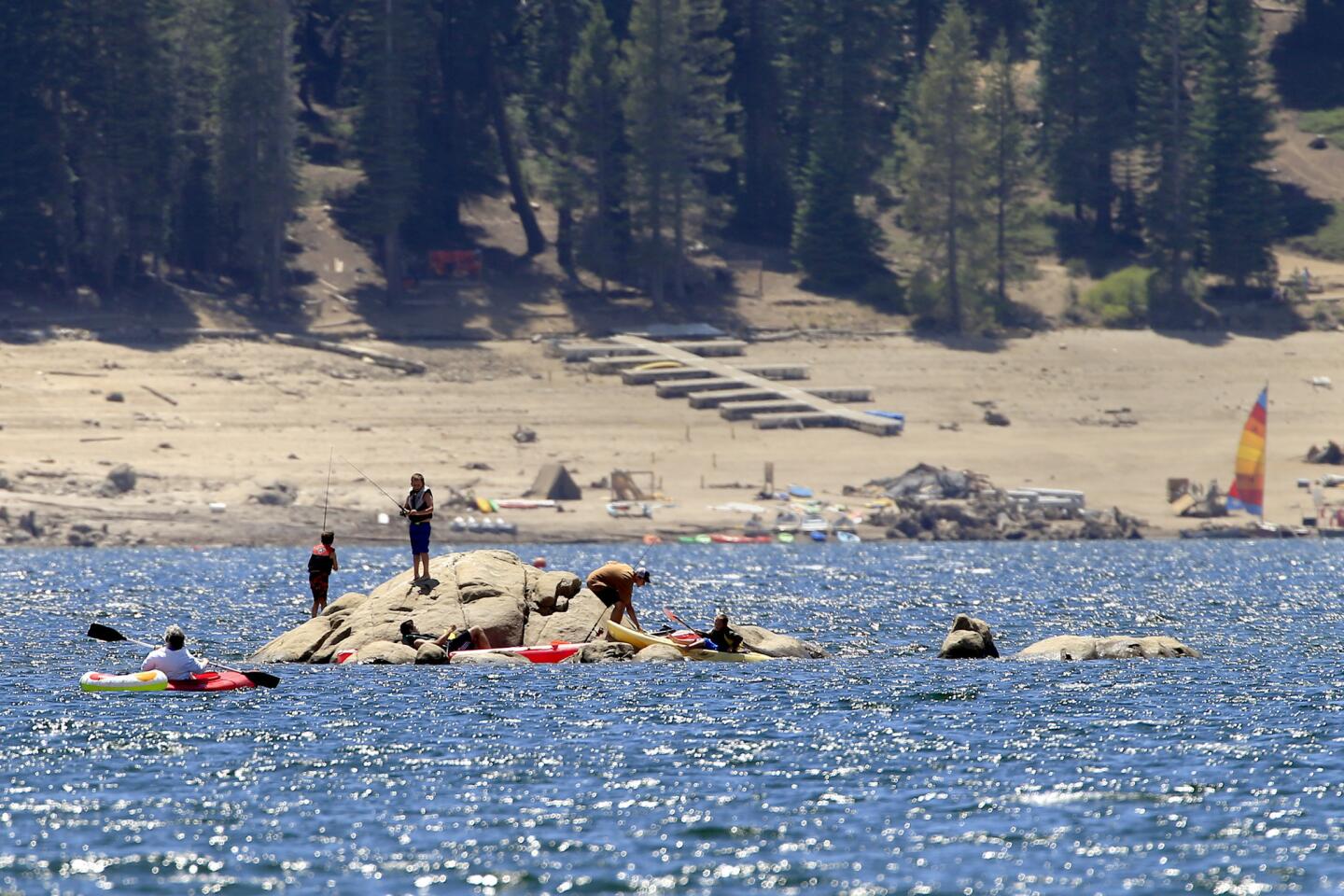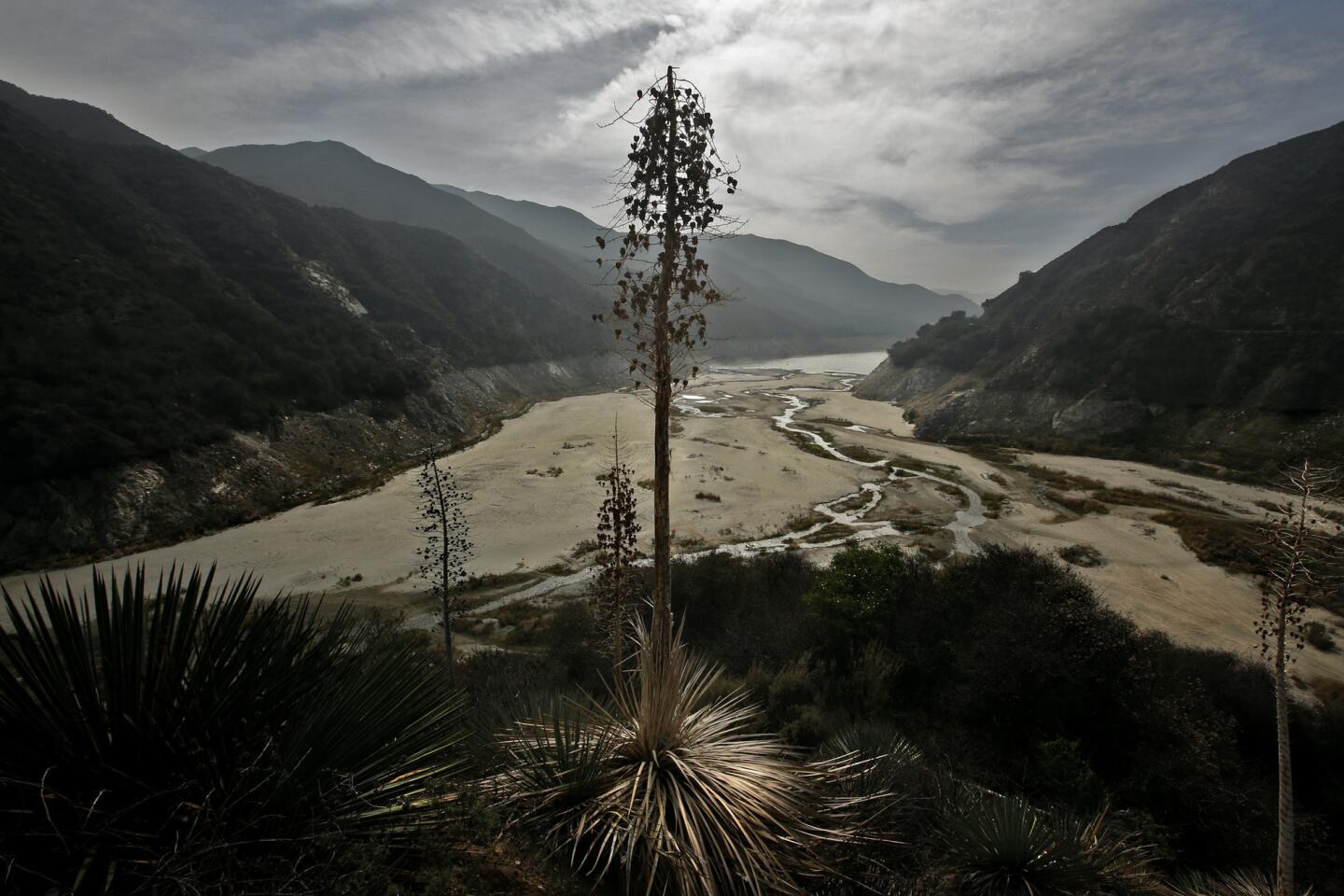California drought: Record heat gives some cantaloupe crops sunburn
The temperatures were so hot this year in Joe Del Bosque’s cantaloupe fields in the San Joaquin Valley that some of the melons could have used sunscreen.
The surface of the fruit got sunburned, which looks bad and in some cases affects taste. He had to throw those away.
The first six months of the year were the hottest ever in California, the National Weather Service said Monday. That’s nearly five degrees warmer than the 20th century average and more than a degree hotter than the record set in 1934.
And July isn’t shaping up to be any better, with a heat wave expected to send temperatures above 100 degrees in parts of Los Angeles County, especially on Thursday and Friday and through the weekend.
Across the state, the bone-dry and hot conditions have been contributing to a much larger number of fires. Through July 19, the California Department of Forestry and Fire Protection reported more than 3,400 vegetation fires that have burned more than 51,000 acres. An average year would see about 2,500 fires and 30,000 acres burned, said CalFire Capt. Amy Head.
The difference is particularly obvious in places that normally feature green landscapes, said Head, who lives in Sonoma County.
“In the winter and spring around Sonoma County you’re driving around and there’s nice, green rolling hills everywhere,” she said. “It was odd to drive around and see brown hills everywhere.
“We got a little rain and everything greened up real quick and the grasses grew tall,” Head added. “Then things dried up just as quickly.”
Warren Blier, a meteorologist for the National Weather Service in Monterey, said that although the Bay Area and other parts of Northern California haven’t necessarily seen pervasive hot weather like other parts of the state, it has been warmer than usual and definitely drier. He said one large reservoir in southern Monterey County, Lake San Antonio, is at only about 4% of capacity.
Stuart Seto, a specialist for the National Weather Service in Oxnard, said the last two years have been the driest on record for downtown L.A., with less than 12 inches of rain total. An average year is about 15 inches, he said.
The months of May and June were actually the warmest on record for planet Earth, Seto said.
Until June, every month this year had been significantly hotter than normal in L.A., said Bill Patzert, a climatologist for the Jet Propulsion Laboratory in La Cañada Flintridge.
January was 4 degrees above normal, February more than 2, March about 4, April almost 2 and May almost 5 degrees hotter than average. June’s temperatures ended up about average for L.A., Patzert said.
It remains to be seen how July will turn out, but August and September are two of Southern California’s hottest months, said Patzert, who calls the latter “the heat wave month.”
The fact that it’s also been dry for at least three years straight in much of the state has worsened an already difficult situation. The agricultural industry is facing $1 billion in lost revenue this year from the state’s worst drought in decades and might have to pay about $500 million for additional groundwater pumping.
Del Bosque, 65, said he’s not growing tomatoes this year because they need a lot of water. And last winter was so warm it reduced the harvest of cherries, which thrive on cold weather. The grower said there has also been lost production because fieldworkers have had to be sent home when it has gotten extremely hot.
“When it gets really hot, you have more losses than normal,” Del Bosque said, recalling a week in June when temperatures hovered in the triple digits.
hector.becerra@latimes.com
Twitter: @hbecerralatimes
Times staff writer Joseph Serna contributed to this report.
More to Read
Start your day right
Sign up for Essential California for news, features and recommendations from the L.A. Times and beyond in your inbox six days a week.
You may occasionally receive promotional content from the Los Angeles Times.




























